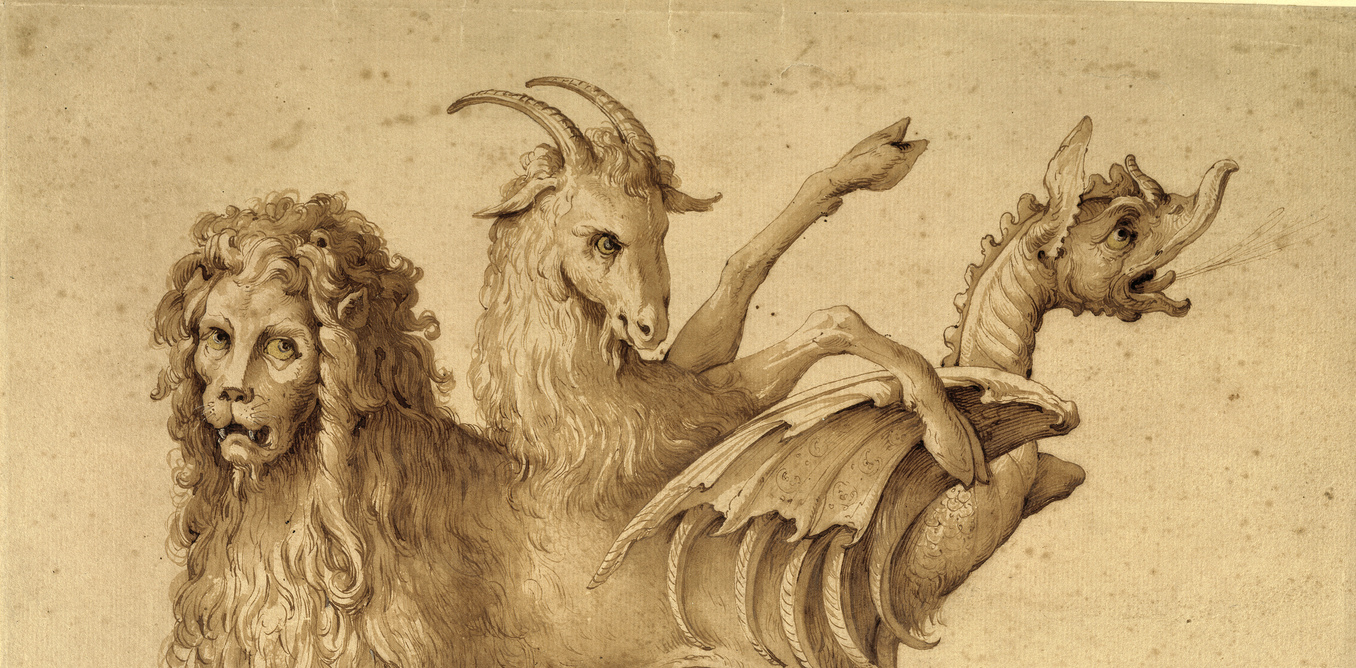By: Crystal Wallace

Hybridity in Monsters
Many societies and cultures, from the past to the present, portray monsters in plays, stories, and literature. A typical variation of a monster is a hybrid, such as “a man having the head of a dog, the tusks of a boar, and the mane of a horse” (Mittman). From Jeffrey Cohen’s book Hybridity, Identity, and Monstrosity in Medieval Britain: On Difficult Middles, he explains the idea that hybrids form as a fusion and disjunction of cultural or conflictual differences “that cannot simply harmonize” (Cohen, 2). The hybrid monster does not imply, however, a unity. Therefore, a hybrid monster indicates nothing of purity or “peaceful melding”. Rather, a hybrid monster represents multiple identities that logically do not go together. Usually this occurs (but is not limited to) the colonizer and the colonized, urbanization, or social movements. To see descriptions of monsters such as a mermaid, angel or griffin, click here. A further analysis of how a hybrid connects to a paradox of two unlike things can be seen in Milton’s Paradise Lost with the hybrid monster Sin.
Culture in Monsters
As stated by Cohen in his book Monsters Theory, “The monster’s body quite literally incorporates fear, desire, anxiety, and fantasy… the monstrous body is pure culture. A construct and a projection, the monster only exists to be read” (Cohen, Monster Theory 5). This translates to monsters exist in stories as a suggestion to mean something bigger than a deformity in society. The idea that a monster reflects the society that it lives in speaks great volumes about what is feared or deemed as different within that society. Many monsters embody those events that are based in turmoil such as social, religious, and political changes. In the sixteenth and seventeenth century of early Britain, people beheld many changes that project into their writings and art. These changes include civil war, the groundbreaking rule of queens, and religious reformation, among many other revolutionary topics. These topics are developed into the bodies of monsters and we are able to decipher the mood and view of them because of it. To see more on how a monster represents a societal change in history, read about Beowulf and Grendel’s mother.

An example can be seen in the image, ‘the Pope-Ass’. This image is interpreted as the Roman antichrist during the Reformation in England. This image attacked the authority of the Catholic pope as deformity of the body signified a warning from God. The warning is seen through the pregnancy of the belly as it promises disaster in the future. The animal parts of the creature represents the animal/inhuman aspect of the church it is affiliated.
Cranach, Lucas, “Papal Ass.” artsandculture.google.com/asset/papal-ass/fAE79ZFRTcIoSQ
Bibliography:
Cohen, Jeffrey (2008). Hybridity, Identity, and Monstrosity in Medieval Britain: On Difficult Middles. Speculum, 83 (2):414-416.83 (2):414-416.
Cohen, Jeffrey Jerome. Monster Theory: Reading Culture. NED – New edition ed., University of Minnesota Press, 1996. JSTOR, www.jstor.org/stable/10.5749/j.ctttsq4d.
Mittman, Asa Simon. Review of Hybridity, Identity, and Monstrosity in Medieval Britain: On Difficult Middles. Studies in the Age of Chaucer, vol. 31, 2009, p. 314-318. Project MUSE, muse.jhu.edu/article/380153.